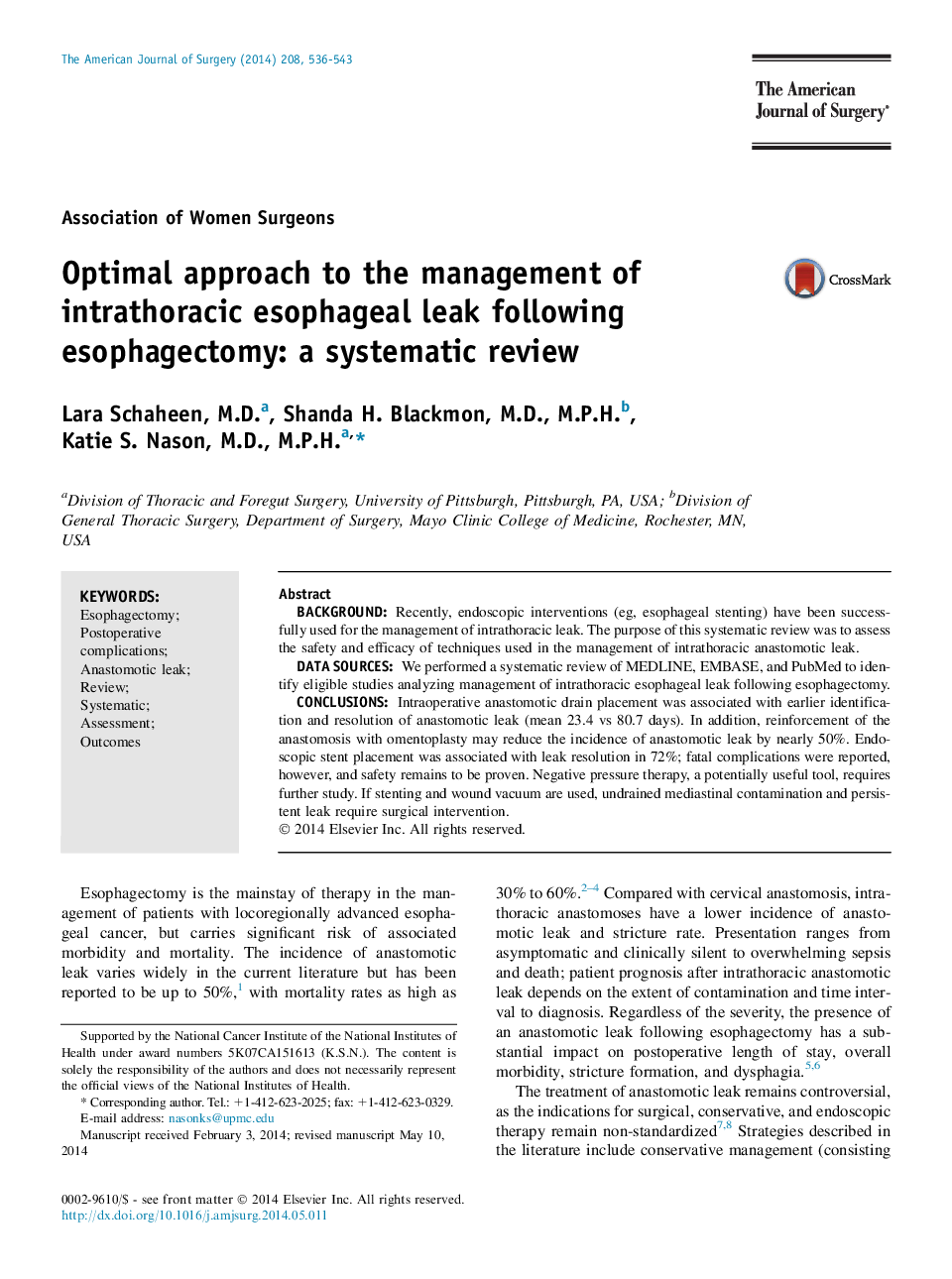| Article ID | Journal | Published Year | Pages | File Type |
|---|---|---|---|---|
| 4278955 | The American Journal of Surgery | 2014 | 8 Pages |
BackgroundRecently, endoscopic interventions (eg, esophageal stenting) have been successfully used for the management of intrathoracic leak. The purpose of this systematic review was to assess the safety and efficacy of techniques used in the management of intrathoracic anastomotic leak.Data SourcesWe performed a systematic review of MEDLINE, EMBASE, and PubMed to identify eligible studies analyzing management of intrathoracic esophageal leak following esophagectomy.ConclusionsIntraoperative anastomotic drain placement was associated with earlier identification and resolution of anastomotic leak (mean 23.4 vs 80.7 days). In addition, reinforcement of the anastomosis with omentoplasty may reduce the incidence of anastomotic leak by nearly 50%. Endoscopic stent placement was associated with leak resolution in 72%; fatal complications were reported, however, and safety remains to be proven. Negative pressure therapy, a potentially useful tool, requires further study. If stenting and wound vacuum are used, undrained mediastinal contamination and persistent leak require surgical intervention.
